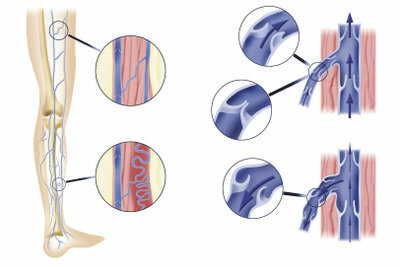Path of blood through the body
Your child comes home with homework from biology class. The homework is to describe the path of blood through the human body. The explanation of the process of how the blood makes its way through the body will vary according to the age of the child.

The path of blood in the human organism
- The blood that flows through the human body is of many different types Functions. It flows through our body and is kept in motion by the heart.
- As the blood finds its way through our body, it takes on various tasks with the help of the bloodstream. For example, it distributes nutrients and hormones, takes waste products out of the cells and distributes the oxygen throughout the human body.
- The blood circulation is kept going by the pumping function of the heart.
- The blood circulation is a closed system and is divided into the small circulation, pulmonary circulation and the large circulation, which the oxygen-rich blood from the heart releases into the various organs and tissues of the body and its waste products from the metabolism records.
- The path of the blood therefore leads through two circuits, the pulmonary circulation and the great circulation.
Heart and blood vessels, such as veins and arteries, form the cardiovascular system of ...
Which route does the blood take through the body?
- Children usually learn with all of their senses. Mainly with the ears and eyes. To make your explanation about the path of blood in the human body a little clearer, it is best to print out a human body from the Internet. Your child can trace the path of the blood with a red and a blue pencil. The blue pencil stands for the oxygen-poor and carbon dioxide-rich blood. The red pencil stands for oxygen-rich and low-carbon blood.
- Explain to your child that the pulmonary circulation goes from the right ventricle through the lungs to the left atrium and the blood in the great circulation makes its way through the left ventricle through the body to the right atrium takes.
- The pulmonary circulation and the great circulation are not separated from each other, but take place one behind the other in two sections. The path of the blood leads from the heart to the lungs and back again and is shorter than the path of the blood through the great circulation. So that the blood takes the right path through the heart and flows in the right direction, it is pumped with sufficient pressure through the heart valves that open in one direction.
- Explain to your child that blood moves through the arteries, capillaries, and veins of the body. The pulmonary circulation begins in the right half of the heart.
- The route of the oxygen-poor and carbon dioxide-rich blood leads through the right ventricle via the pulmonary artery to the lungs. In the lungs, the blood takes in oxygen and gives off carbon dioxide.
- It flows back into the left half of the heart via the pulmonary vein. The oxygen-enriched blood in the lungs flows from the left half of the heart via the arteries into the body to the organs and cells. The blood releases the oxygen, important nutrients and hormones to the capillaries and absorbs waste products and carbon dioxide.
- The oxygen-poor and carbon dioxide-rich blood goes back to the right half of the heart via the body veins. With this the self-contained blood circulation begins again.
- Depending on the age of the child, you can describe the path of the blood even more precisely, for example by pumping of the heart and the structure of the heart in connection with the pulmonary circulation and the body circulation.
How helpful do you find this article?
The content of the pages of www.helpster.de was created with the greatest care and to the best of our knowledge and belief. However, no guarantee can be given for the correctness and completeness. For this reason, any liability for possible damage in connection with the use of the information offered is excluded. Information and articles must under no circumstances be viewed as a substitute for professional advice and / or treatment by trained and recognized doctors. The content of www.helpster.de cannot and must not be used to make independent diagnoses or to start treatments.

